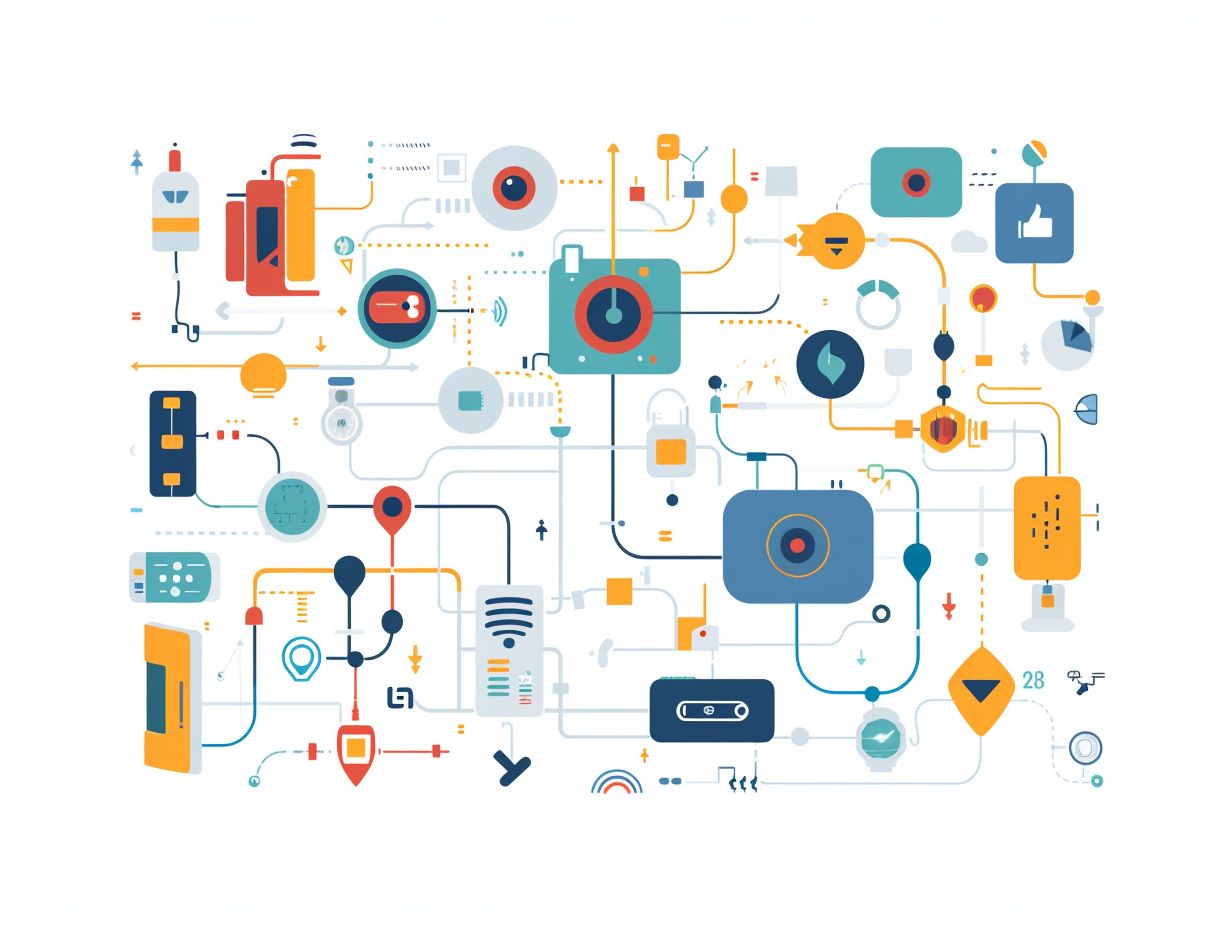Understanding the Role of AI in Enhancing XDR Capabilities

In today’s ever-evolving digital landscape, you should consider incorporating Artificial Intelligence (AI) into Extended Detection and Response (XDR) solutions to revolutionize the way your organization detects and responds to cyber threats.
This article delves into the benefits of integrating AI in XDR, which include improved threat detection, enhanced automation, and increased efficiency. Additionally, it addresses the challenges and limitations associated with this integration, such as data privacy concerns and the necessity for human oversight.
Key considerations for implementing AI in XDR are emphasized, along with discussions on future advancements in cybersecurity.
Key Takeaways:

What is XDR?
In today’s rapidly evolving cybersecurity landscape, you need to consider XDR, or Extended Detection and Response, which is a holistic security approach that integrates multiple security components to provide unified threat detection and response capabilities across various endpoints and network environments.
XDR plays a crucial role in centralizing security operations and facilitating quicker incident response. Unlike traditional solutions that focus on individual layers of security, XDR combines data from different sources such as endpoints, emails, servers, and cloud environments to provide a more comprehensive view of your organization’s security posture.
Utilizing AI-driven Machine Learning algorithms, automated response actions, and behavioral analytics, XDR quickly identifies patterns, anomalies, and potential threats, enabling security teams to proactively defend against sophisticated cyber attacks.
The Benefits of AI in XDR
The integration of AI in XDR provides organizations with various advantages, including enhanced threat detection and response capabilities, as well as improved automation and efficiency in addressing advanced cyber threats.
Improved Threat Detection and Response
By integrating AI into XDR, you can significantly improve your threat detection and response capabilities. This technology leverages ML algorithms to identify potential threats, analyze attack sequences, and provide actionable insights for your security team to respond effectively.
When utilizing AI-driven XDR, your security operations can benefit from increased accuracy in threat detection, resulting in a decrease in false positives and enabling swift responses to security incidents. Machine learning algorithms are crucial in continuously learning and adapting to new threats, while automation helps streamline the incident response process. Behavioral analytics allows for the detection of subtle malicious behaviors that traditional security measures may overlook, assisting organizations in staying ahead of attackers by analyzing threat intelligence and proactively strengthening their defenses.
Enhanced Automation and Efficiency

The integration of AI technologies in XDR not only streamlines security operations through automation but also enhances the overall efficiency of threat identification, response workflows, and the mitigation of malicious operations in complex IT environments.
AI-driven automation plays a crucial role in optimizing security tasks for SOC teams by reducing alert fatigue and improving response times to security incidents. By utilizing AI capabilities, security professionals can effectively manage cloud workloads, enhance endpoint detection, and correlate vast amounts of data for quick and efficient threat identification. This incorporation of AI technology in XDR enables organizations to stay ahead of evolving cyber threats and proactively defend their digital assets.
Challenges and Limitations of AI in XDR
Despite the benefits, you may encounter challenges and limitations when adopting AI in XDR. These may include concerns related to data privacy, potential bias in AI algorithms, the necessity for human oversight and ongoing training, and the ever-changing cybersecurity landscape shaped by malicious actors.
Data Privacy and Bias Concerns
One of the primary challenges you will face in implementing AI in XDR is ensuring data privacy and addressing potential biases in AI algorithms used for threat detection and response. This underscores the critical necessity for transparent AI research and ensuring the public availability of security solutions that can mitigate bias.
This effort must also include a consideration of the ethical implications of collecting and utilizing personal data in AI-driven XDR systems. Organizations must carefully navigate the balance between utilizing data to enhance security measures and protecting individual privacy rights.
The risk of bias in AI models is a major concern, as decisions based on biased algorithms can have widespread implications. Transparent AI research is essential for identifying and rectifying such biases, ultimately aiding in the creation of unbiased security solutions.
Technologies such as SIEM and EDR provide valuable tools for monitoring and analyzing data, which can help mitigate privacy risks and address bias issues in AI-powered XDR environments.
Human Oversight and Training
To effectively implement AI in XDR, you need robust human oversight and continuous training of your SOC teams. This training is essential to ensure they can accurately interpret the insights generated by AI, mitigate alert fatigue, analyze malicious behavior, and correlate data to effectively detect and respond to evolving threats such as malware and ransomware.
By involving your SOC teams in overseeing AI operations, your organization can fully leverage the potential of AI-driven XDR. SOC analysts have a critical role in refining AI algorithms, validating alerts, and making strategic decisions based on AI recommendations. Their expertise helps in reducing false positives, improving threat identification capabilities, and streamlining incident response processes.
Training your personnel to interpret AI-generated insights effectively provides them with the necessary skills to proactively address emerging threats, strengthen cybersecurity defenses, and stay one step ahead of cyber adversaries.
Implementing AI in XDR

For successful implementation of AI in XDR, organizations must consider key factors such as technology readiness, skilled information security personnel, understanding malicious operations, and the evolving threat landscape. It is essential to leverage AI-driven XDR capabilities for proactive threat hunting and comprehensive telemetry analysis.
Key Considerations and Best Practices
When venturing into AI implementation in XDR, your organization must prioritize key considerations. These include:
- Assessing technology compatibility
- Embracing AI-driven XDR solutions
- Understanding the threat landscape
- Responding effectively to security incidents in cloud workloads
- Proactively engaging in threat hunting and telemetry analysis
By integrating AI into your XDR environments, your organization can enhance its cybersecurity defenses by leveraging advanced technologies to detect and respond to threats more efficiently. It is crucial for your teams to conduct thorough technology assessments to ensure seamless integration of AI solutions within your existing XDR framework.
Adopting AI-driven tools can give the power to your teams to stay ahead of evolving threats in today’s dynamic cybersecurity landscape. With a deep understanding of the threat landscape, your organization can strategically allocate resources and fortify your cloud security incident response strategies for optimal protection.
Future of AI in XDR
The future of AI in XDR presents significant potential for cybersecurity, offering advancements that could transform threat detection, response mechanisms, and overall security posture. By embracing AI/ML technologies, organizations can effectively address the evolving threats posed by deepfakes, improve real-time monitoring capabilities, and prevent malicious activities through advanced threat alerts and comprehensive data lake analysis.
Potential Advancements and Impact on Cybersecurity
The potential advancements in AI for XDR are poised to have a transformative impact on cybersecurity, revolutionizing threat detection and response capabilities, enhancing AI-driven XDR solutions for cloud environments, improving threat hunting techniques, optimizing telemetry analysis, and reducing false positives in identifying security incidents.
These developments in AI for XDR not only promise to elevate cybersecurity measures but also pave the way for more sophisticated threat detection modalities. As AI continues to evolve, the advancements in AI-driven XDR will play a pivotal role in fortifying cloud security landscapes.
With the integration of innovative threat hunting methodologies, organizations will be better equipped to preemptively address potential cyber threats. The optimization of telemetry data analysis will enable more precise and efficient identification of security breaches, while strategies geared towards minimizing false positives will enhance overall incident response capabilities.
Frequently Asked Questions

1. What is XDR and why is it important?
XDR stands for Extended Detection and Response and it refers to a comprehensive security solution that combines multiple security technologies into one platform. It is important because it allows organizations to have a holistic view of their security posture and respond to threats more effectively.
2. How does AI enhance XDR capabilities?
Artificial Intelligence (AI) plays a crucial role in enhancing XDR capabilities by automating threat detection, response and remediation processes. AI algorithms can analyze large volumes of data and identify patterns and anomalies that may indicate a potential threat, allowing for faster and more accurate threat detection.
3. Can AI completely replace human involvement in XDR?
No, AI cannot completely replace human involvement in XDR. While AI can automate certain tasks, it still requires human oversight and decision making to ensure the accuracy and relevance of the detected threats. Human analysts also play a critical role in investigating and responding to complex or evolving threats.
4. What are the benefits of using AI in XDR?
There are several benefits of using AI in XDR, including faster threat detection and response, better accuracy and scalability, and reduced workload for human analysts. AI can also help with proactive threat hunting, identifying potential threats before they can cause harm to the organization.
5. Is AI biased in its threat detection capabilities?
AI algorithms can be biased if they are trained with biased data or if they are not regularly updated and monitored. However, with proper training and monitoring, AI can actually reduce bias in threat detection by analyzing data objectively and without human biases.
6. How can organizations ensure the ethical use of AI in XDR?
To ensure the ethical use of AI in XDR, organizations should establish clear guidelines and policies for the use of AI, regularly monitor and audit the algorithms for bias, and involve human oversight and decision making in all AI-related processes. It is also important to prioritize transparency and accountability in the use of AI for XDR capabilities.









